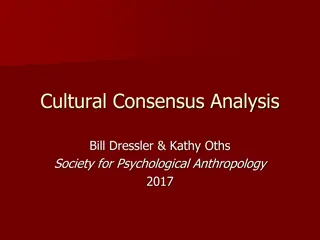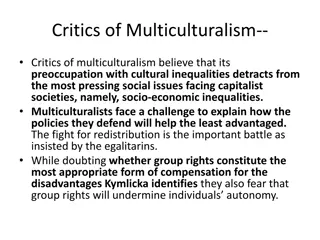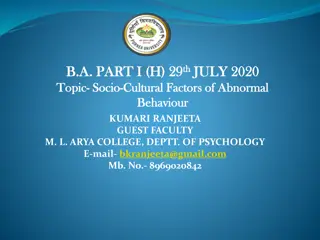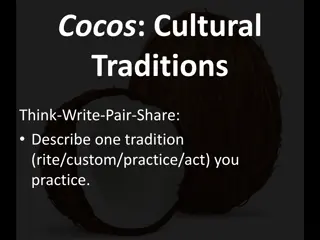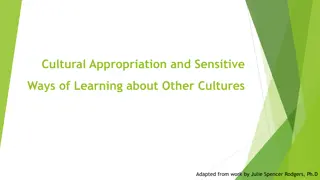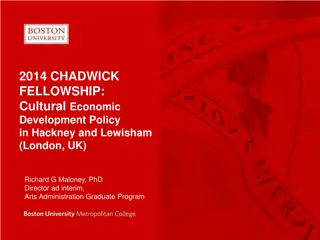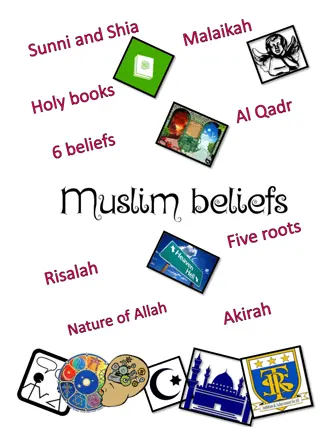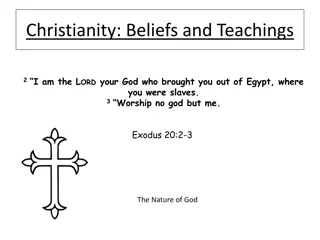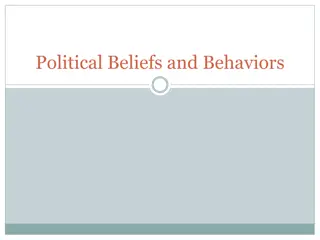Exploring Sikhism: History, Beliefs, and Cultural Significance
Sikhism, originating in Punjab amidst Hindu-Muslim conflicts, was founded by Guru Nanak in 1469. Rejecting elements of Hinduism and Islam, Sikhism is a unique religion emphasizing oneness with God, karma, and reincarnation. Central beliefs include the unity of humanity, God's presence in all individuals, and spiritual liberation. The historical development led to Sikhism evolving as a distinct religion, spreading beyond its origins.
Download Presentation

Please find below an Image/Link to download the presentation.
The content on the website is provided AS IS for your information and personal use only. It may not be sold, licensed, or shared on other websites without obtaining consent from the author. Download presentation by click this link. If you encounter any issues during the download, it is possible that the publisher has removed the file from their server.
E N D
Presentation Transcript
Location Punjab Today part of northwestern India and eastern Pakistan Region has a history of religious conflict between Hindus and Muslims. Sikhism has been nurtured in the midst of conflict and exhibits elements of both groups.
Nanak Founder of Sikhism is Nanak, born in 1469. Grew up in a Hindu Family, had two children and had several jobs as both a herder and clerical assistant to a Sultan. Created a devotional association with a Muslim Friend
Nanaks Beliefs Insisted there is no Hindu and there is no Muslim that the true name of God is experienced. He reached this conclusion through a revelation. Nanak wanted to spread his understanding so he left his family and home to preach and seek disciples. Sikh means disciple. On his journey Nanak wore a Hindu dhoti, with a Muslim coat and cap. His forehead was adorned with Hindu religoius markings. Nanak is commonly called Guru Nanak and is recognized as the first of a line of ten Sikh gurus.
Sikhism Although historically a blend of Hinduism and Islam, today scholars see Sikhism as a totally unique religion. Guru Nanak accepted a belief in reincarnation and karma. Humans were seen as a composite of body and spirit. The body and physical world bind and limit the spirit. The spirit must overcome physicality as it seeks freedom and absorption in the divine.
Sikhism- Elements of Other Religions Rejected Hindu Ritual- belief that it took human attention away from God Rejected Hindu devotion to images of various gods and goddesses. Acceptance of meat eating (Islam)- Animal world created for the use of human beings.
Sikhism and God God is beyond personhood. God has personal qualities such as knowledge, love, a sense of justice and compassion. God can be approached personally by the individual. God is the primary Guru God dwells within each individual and can be contacted with the human heart.
Historical Development Originally Sikhism was not defined as a distinct religion, just a religious movement that sought coexistence. Result of self-protection and self-definition: adoption of a book, city, and clearly defined religious practices. Sikhism moves beyond land of origin and make converts in other areas of the world.
Scripture- Adi Granth Primary book divided into three parts. First and most important part is the Japji a long poem by Guru Nanak that summarizes the religion.
Canticle by Nanak Wonderful Your word, wonderful Your knowledge; Wonderful Your creatures, wonderful their species; Wonderful their forms, wonderful their colors; Wonderful their animals which wander naked; Wonderful Your wind; wonderful Your water Wonderful Your nearness, wonderful Your remoteness; Wonderful to behold You present.
Sikh Khalsa Typically associated with turbans. Five K s Kesh: uncut hair and beard. In association with the lion and its power, the hair on the head is worn in a topknot and covered with a turban or cloth. Turbans are only worn by those who have entered the Khalsa (special Sikh military order) Khanga: hair comb- to hold long hair in place. Kach: special underwear- to indicate alertness and readiness to fight Kirpan: sword- for defense Kara: bracelet of steel- to symbolize strength
Sikhism Today Due to military training Sikhs were employed by the British as soldiers during imperial rule. 2 million left Pakistan to avoid conflict with the Muslim majority, most settled in northwestern India and today some hope to create an independent state. Many have settled outside of India










